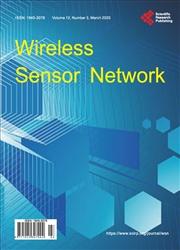Improved Self-Pruning for Broadcasting in Ad Hoc Wireless Networks
引用次数: 8
Abstract
Reducing number of forwarding nodes is the main focus of any broadcasting algorithm designed for ad-hoc wireless networks. All reliable broadcasting techniques can be broadly classified under proactive and reactive approaches. In proactive approach, a node selects a subset of its neighbors as forwarding node and announces the forwarding node list in the packet header during broadcast. On the other hand, no such forwarding list is generated in reactive approach. Rather, a node (cognitively) determines by itself whether to forward the packet or not based on neighbor information. Dominant pruning and Self-pruning are two example techniques that fall under proactive and reactive approach respectively. Between the two methods, dominant pruning shows better performance than self-pruning in reducing number of forwarding nodes as they work with extended neighbor knowledge. However, appended forwarding node list increases message overhead and consumes more bandwidth. As a result, the approach becomes non-scalable in large networks. In this paper, we propose a reactive broadcasting technique based on self-pruning. The proposed approach dubbed as “Improved Self-pruning based Broadcasting (ISB)” algorithm completes the broadcast with smaller packet header (i.e., with no overhead) but uses extended neighbor knowledge. Simulation results show that ISB outperforms dominant pruning and self-pruning. Furthermore, as the network gets more spread and denser, ISB works remarkably well.Ad Hoc无线网络中改进的广播自修剪
减少转发节点数量是任何针对自组织无线网络设计的广播算法的主要关注点。所有可靠的广播技术可大致分为主动和被动两类。主动转发方式是在广播时,节点从其邻居中选择一个子集作为转发节点,并在报文报头中公布转发节点列表。另一方面,响应式方法不生成这样的转发列表。相反,节点(认知地)根据邻居信息自行决定是否转发数据包。显性剪枝和自剪枝分别属于主动剪枝和被动剪枝。在两种方法中,优势剪枝在减少转发节点数量方面表现出比自剪枝更好的性能,因为优势剪枝处理的是扩展的邻居知识。但是,附加的转发节点列表增加了消息开销,占用了更多的带宽。因此,这种方法在大型网络中变得不可扩展。本文提出了一种基于自修剪的响应广播技术。所提出的方法被称为“改进的基于自修剪的广播(ISB)”算法,该算法使用较小的包头(即没有开销)完成广播,但使用扩展的邻居知识。仿真结果表明,ISB算法优于显性剪枝和自剪枝算法。此外,随着网络变得更加广泛和密集,ISB工作得非常好。
本文章由计算机程序翻译,如有差异,请以英文原文为准。
求助全文
约1分钟内获得全文
求助全文

 求助内容:
求助内容: 应助结果提醒方式:
应助结果提醒方式:


